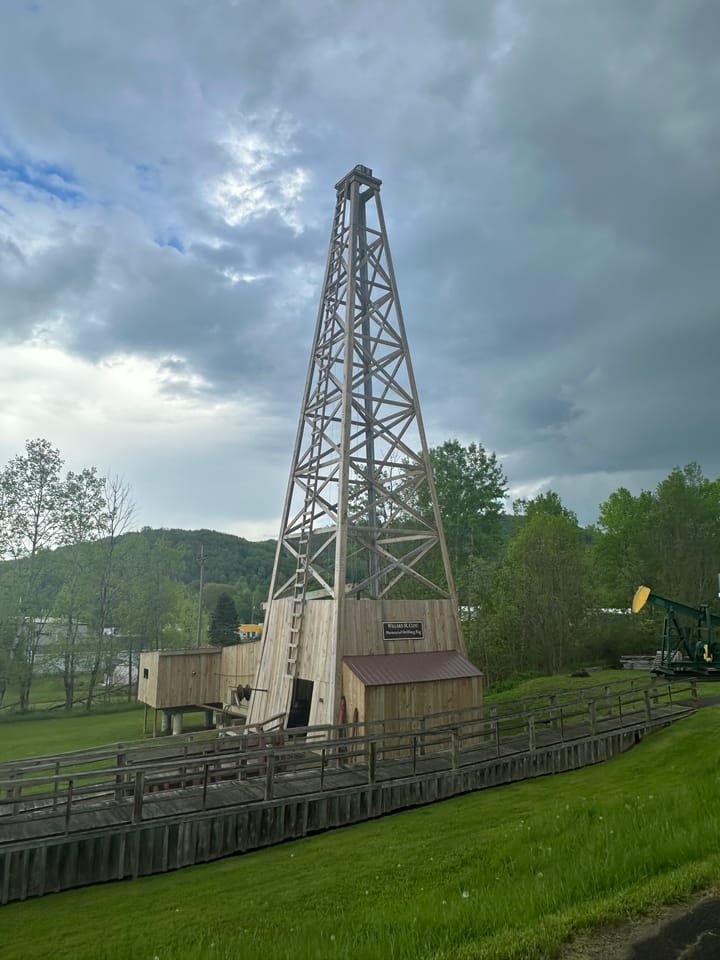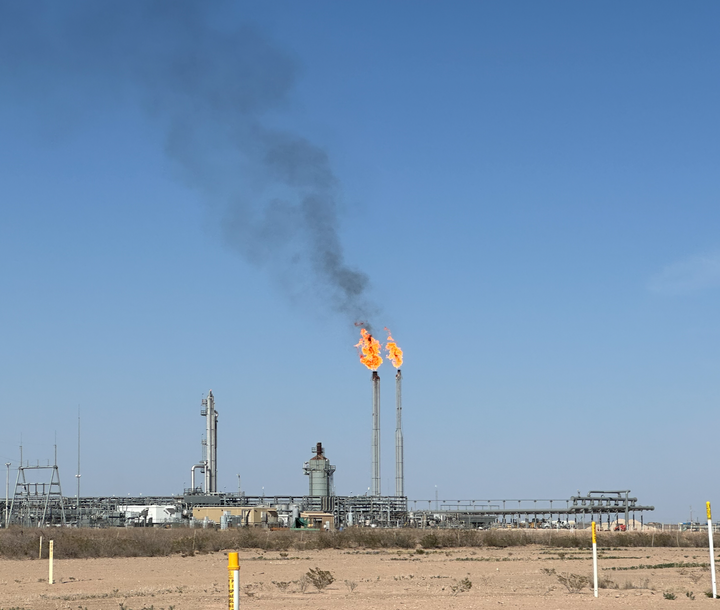Fracking’s ‘New Religion’ Offers False Hope

After the shale oil and gas industry lost a half trillion dollars in what the Wall Street Journal recently called the “unprofitable American oil boom” and investors started fleeing, the U.S. shale industry is now telling investors that industry consolidation is the answer to its financial troubles — but this old adage is being disguised as a new approach, even though it didn’t solve anything in the past.
In February, the Financial Times wrote about the U.S. shale industry’s “new religion,” which is supposed to convince investors to have faith in shale.
“One tenet of the new shale ‘religion’ is that scale is critical to survival — but of operators, not the overall sector,” the Financial Times wrote.
This idea that bigger companies are the solution to the shale industry’s long-standing inability to make a profit is being pushed hard by the industry, including by Ben Dell, managing partner at private equity firm Kimmeridge, which has recently made large investments in shale even after publishing criticism of the industry’s loss-producing history and stating last year that the industry was “in crisis.” In a July interview with the trade journal Shale Mag, Dell suggests that the solution for the U.S. shale industry is massive consolidation, which would result in just a handful of large remaining players.
“To me, if I look at what the optimal E&P [exploration and production] sector looks like, in the U.S.,” Dell told Shale Mag. “I would think you’d have 10 or 15 [companies after consolidation].”
While there are approximately 9,000 oil and gas E&P companies in the U.S., in a March 2020 interview Scott Sheffield, CEO of shale company Pioneer Resources, noted that there were 74 independent publicly traded E&P companies in the U.S. Consolidating those companies into 10 or 15 larger ones would result in a much smaller number of companies holding significantly larger assets.
The idea behind consolidation as a solution to the shale industry’s economic woes is based on the idea of economies of scale. Larger companies can negotiate better prices with contractors and suppliers, which is one argument to be made for scale in industry. Additionally, it is easier for big companies to borrow money. However, the case being made for consolidation in the shale industry is rather vague at this point and will require a leap of faith from investors.
The Financial Times explained part of the rationale, saying: “Scale will also allow [the consolidated companies] to compete with ExxonMobil and Chevron.”
This so-called new religion of bigger is better for the shale industry has been around for a bit, however, despite previous such promises failing to pay off.
In 2019, I wrote two articles that highlighted how ExxonMobil said it would be successful in shale where others had failed, and claimed that its scale and expertise would enable it to produce oil in the Permian Basin for only $15 a barrel when at the time the industry averages for producing oil were closer to $50 a barrel. That same year, Reuters reported that ExxonMobil CEO Darren Woods promised the oil giant would change “the way that game is played,” in part because of its size — arguing that with shale, bigger was better. A new analysis from the Institute of Energy Economics and Financial Analysis (IEEFA) details how Exxon’s promises to investors regarding its large investment in the Permian have not panned out.
The new religion of “bigger is better” is designed to give investors faith that the shale industry will now — finally — be profitable. Yet, another comment from Dell’s interview with Shale Mag should give investors pause.
The article lists Dell’s “Three Pillars of Reform” needed for the shale industry. The first, which is being presented as a new approach, should alarm any investor: “Establishing a profitable business model that creates a return above the cost of capital and returns free cash flow to investors.”
After more than a decade of oil production, the newly proposed fix for the shale industry’s financial problems is business 101: “establishing a profitable business.”
The shale industry’s problem, however, is that in its more than a decade of operation, it has never been profitable.
Consolidation Will Happen As Many Leave Shale Business
An important geological reality is that there is only so much oil trapped in the shale of North America, and given its production history, the best years of the U.S. shale industry are likely behind it. That means it’s ultimately not possible to change the scale of the industry in any significant way. Bigger companies will simply have more of the same assets that weren’t making money for smaller companies.
In April, I wrote about how many fracking investors were looking to sell and get out of the business. The reason investors were looking to leave was summed up by Adam Waterous, head of the private equity group Waterous Energy Fund as he told the Financial Times: “This business is broken.”
The majority of the best oil-producing acreage has been drilled — even industry leaders have admitted this. As a result, it only gets harder to make money going forward. Companies that realize this fact usually choose one of two options: sell the assets or purchase a new company and double-down on convincing investors that combining two struggling companies will somehow result in profits.
Last July, CEO Matt Gallagher at shale company Parsley Energy said that U.S. oil production likely peaked in 2020at 13.1 million barrels per day and would never reach those levels again. In November, after failing to meet production forecasts, Gallagher agreed to sell Parsley to industry rival, Texas-based Pioneer Resources.
Pioneer is on a buying spree of shale assets and is clearly doubling down on the idea that bigger is better.
This year, Pioneer made another major shale acquisition, purchasing Double Point Energy for $6.4 billion. Pioneer’s chief operating officer Rich Dealy explained the rationale for the purchase to S&P Global saying: “It … provides significant synergies.”
Pioneer and Parsley were two of the companies profiled in a 2019 Wall Street Journal article highlighting how the companies’ oil well production was failing to live up to estimates given to investors. Pioneer is asking investors to believe “synergies” can overcome the realities of underperforming assets. One reason this current sales pitch from the industry is attractive is that the results for this approach won’t be known for several years. It is a way to give the shale industry a few more years to extract money from investors.
In January, Chevron’s chief financial officer Pierre Breber explained the rationale of consolidation to the Financial Times, saying that, “You need to have bigger players, stronger players, more disciplined management teams, stronger balance sheets” — in other words, consolidation.
Indeed, stronger balance sheets are needed. But scale doesn’t necessarily solve that. As the case of Exxon illustrates, after the company got into the shale game, its balance sheet has been a disaster. The oil major had to borrow large sums of money to get into the shale business in the Permian region where it has since lost money producing oil and gas.
Exxon’s Scale Fail
Exxon tried to go big in the shale gas industry with its 2009 purchase of fracking company XTO for $41 billion — the deal is now considered one of the worst acquisitions in the history of the energy industry.
As a 2019 New York Times article about the rise of the Permian oil field in Texas noted, Exxon’s “giant new investments” in the area aimed to help it “increase [oil] production fivefold by 2025.” This included plans to increase Permian production to one million barrels per day.
Since then, the U.S. Securities and Exchange Commission (SEC) announced an investigation into Exxon for potential fraud by promising oil production numbers to investors that its own engineers said were unrealistic. Instead of one million barrels a day, Exxon’s Permian outputs declined last year — its operations produced 370,000 barrels per day in 2020 and it expects to produce 400,000 in 2021. That’s less than half of what the fossil fuel giant boldly promised.
Exxon’s history in shale includes big losses and missed oil production targets. If scale is the current solution for shale, Exxon’s major losses and oil production disappointments appear to be a warning signal to investors that scale doesn’t solve shale.
Certainly, being one of the world’s largest oil companies isn’t always enough to make U.S. shale a good investment. In the same 2019 New York Times article, oil major Shell was cited as one of the success stories. At the time, Shell was all-in on the Permian. “We are not here through one boom and bust,” Amir Gerges, Shell’s Permian general manager, told the Times “We are here developing a generational resource.”
But just over two years later, Shell’s Permian assets in that “generational resource” are up for sale.
Shell’s corporate website describes its Permian assets and approach to investors: “Shell has driven down costs while increasing efficiency in all areas of its business, proving it can be as nimble as an independent operator.”
Shell is a big company telling investors it is a good investment because it acts like a small company — a clear contradiction to the current bigger is better sales pitch. If simply being bigger was the solution to profitability in shale, Shell would appear to be in an ideal position. Instead, Shell has decided to try to get out.
Shell isn’t alone in deciding it may be best to get out of the shale business. After major acquisitions in the past, this year, major European oil company Equinor, struggling to make a profit, sold all of its shale assets in the Bakkenregion of North Dakota. CEO Anders Opedal admitted: “We should not have made these investments.”
History Shows Bigger Is Not Better
As far back as 2010, John Dizard wrote in the Financial Times that the finances of fracking shale were a “fairytale.” And DeSmog has been writing about the issue since 2013. The reality that shale isn’t profitable is a fact that’s been well hidden by the industry for over a decade. This latest attempt to convince investors that “bigger is better” is just one more attempt to distract investors and to hide the ugly financial truth about shale.
And while Exxon’s XTO acquisition failure was considered a major one, it is superseded by another shale boondoggle: Occidental’s 2019 $55 billion purchase of shale company Anadarko. That deal is now also in the running for worst energy acquisition ever due to the amount of debt Occidental took on for the purchase after winning a bidding war against Chevron. Despite much higher oil prices, Occidental reported a loss of $97 million in the second quarter of 2021, with its Permian oil production down 17 percent versus the same period the prior year.
In March at CERAWeek, the oil industry’s top annual conference, Occidental CEO Vicki Hollub told the truth about the shale business in light of the Anadarko purchase. “The profitability of shale is much more difficult than people ever realized,” she said.
The challenge facing the U.S. shale industry is the same as it has always been: to create businesses that make profits while fracking for oil. After more than a decade of failing at that, the industry now wants investors, and the public, to believe that an old failed approach is the new shale solution — if only they have a little faith.
This article originally appeared at DeSmog.



Comments ()